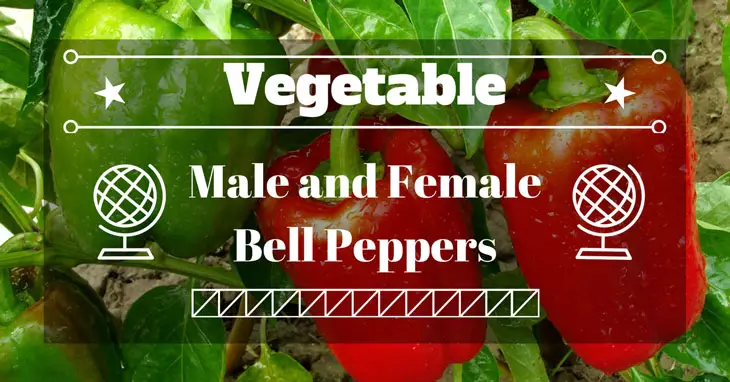How to Identify Male and Female Bell Peppers?
Many people are curious to know if there really are male and female bell peppers. This idea has been around for many years. The theory is that the number of lobes a bell pepper has will indicate its gender and whether it will have more seeds or is sweet. Moreover, when you try to search online for an answer, you’ll find that there are two different points of view to this.
More...
Do bell peppers have gender?
Myth
Bell peppers with four lobes are female while bell peppers with three lobes are male. According to the same theory, male bell peppers are best for cooking while female bell peppers are generally sweeter, with more seeds and best eaten raw.
Fact
Vegetables don’t have a gender. In plants, it is typically the flowers that have the sexual organs. The flowers of bell peppers are often referred to as “perfect” flowers as they have both the male and female parts (stamen and pistil). The same is true for other plants in the Nightshade family including tomatoes, potatoes and eggplants. Botanists call these flowers as hermaphroditic or bisexual.
You might be wondering what are the advantages of having “perfect” flowers. This means that the fruit of the pepper plants contains ovaries which in turn produce seeds. Each fruit developed though a self-fertilization process.
There is a wide variety of bell peppers and they differ in size and shape. Typically, each pepper will have three or four lobes. Some varieties could have less or more lobes. The number of lobes doesn’t indicate the sex of a bell pepper because if this is so,
How do you call bell peppers with only two or five lobes?
Myth
Bell peppers with four lobes contain more seeds.
Fact
It may be true that four lobed-bell peppers have more seeds because they have more cavity space where the seeds can grow. But this is not always true as there is no way to determine how much seeds a fruit contains unless you cut it open.
However, if you are hunting for bell-pepper seeds, you are better off choosing those with four lobes.
Myth
Four-lobed peppers are sweeter.
Fact
The sweetness of a pepper generally depends on its variety and not on the number of lobes it has. Other factors that affect its sweetness include the soil, weather, and how long the fruit stays on the plant. Most gardeners know that bell peppers that mature from green to red on the plant will be sweeter regardless of their number of lobes.
Now that we busted some of the popular myths about bell peppers, it would be good to know just how to properly grow these plants:
Basic Needs of Bell Peppers
The quality of soil as well as its pH level can greatly affect the overall health of a bell pepper. To promote healthy growth, choose a soil that drains easily. A soil that is not too clay-filled or too sandy is the ideal choice. If the soil is not that healthy, adding a good amount of organic fertilizer provides the vital nutrients for the plants.
You can successfully grow bell peppers if you know their basic needs. The Farmer’s Almanac listed down some of the important tips for growing bell peppers:
Planting Tips
Care Tips
Bell pepper is a popular ingredient for salads and for various dishes. It is a vegetable many people are familiar with. Its popularity also leads many to believe the popular myths about this plant. It is easy to believe some myths that have already been circulating for many years.
It is important to remember that there are no male or female bell peppers. The number of lobes a bell pepper has doesn’t indicate the sweetness or the number of seeds a fruit has. If you are going to use a bell pepper for cooking or for a salad, you can basically use any fruit regardless of its number of lobes.
References:
Did you find this article useful? Did you also believe that bell peppers have gender? We are curious to know your thoughts. Please don’t forget to also share this article to others.

